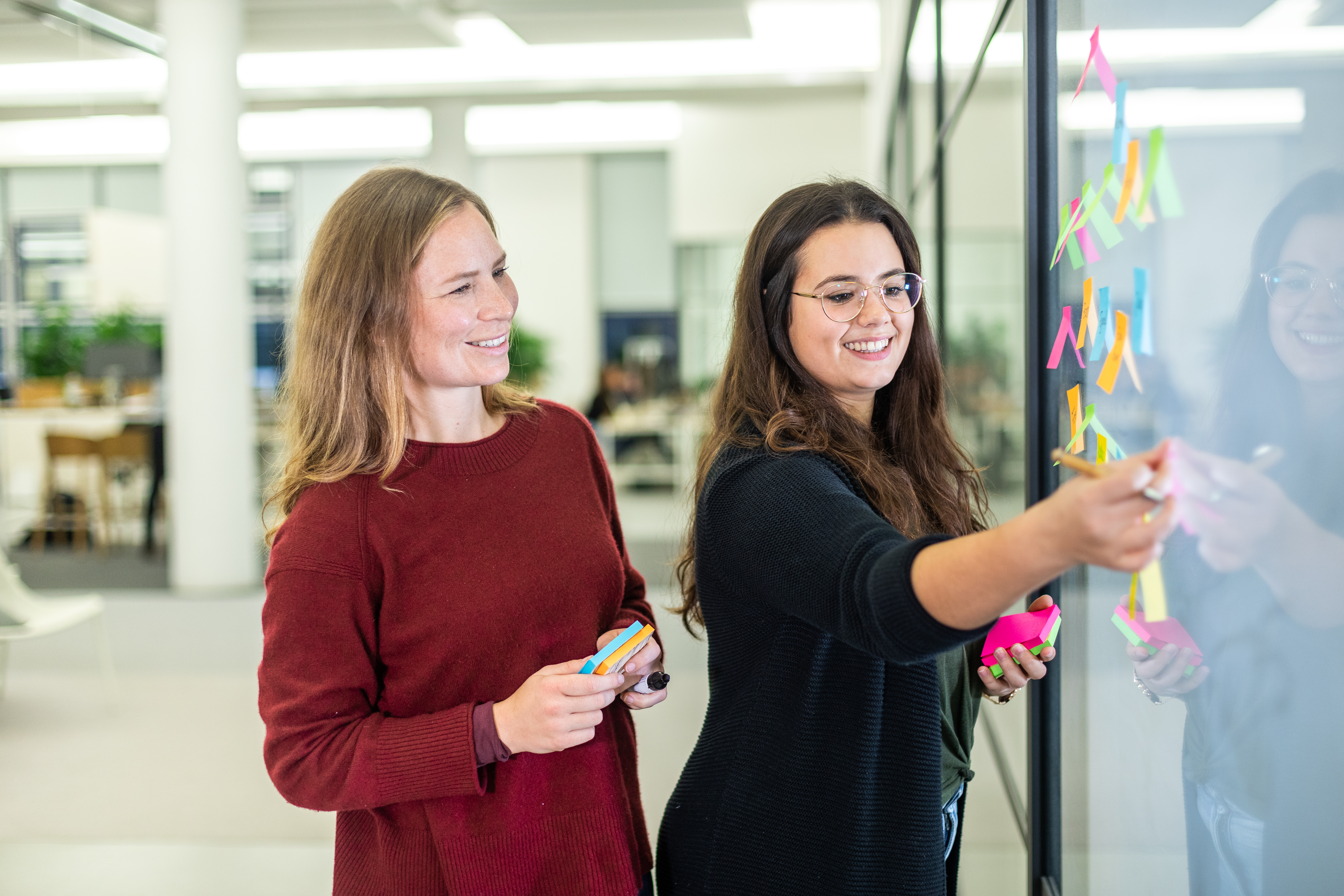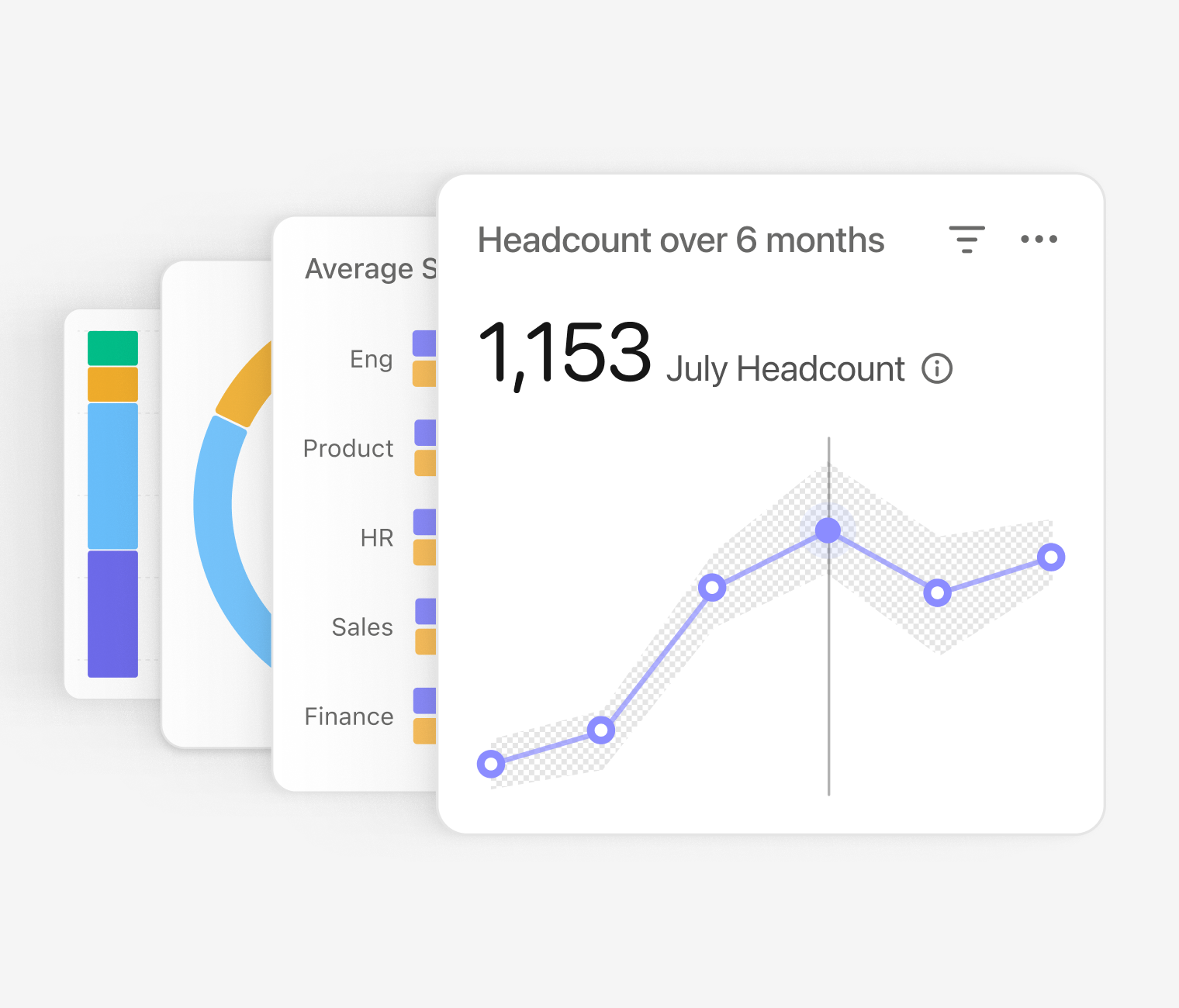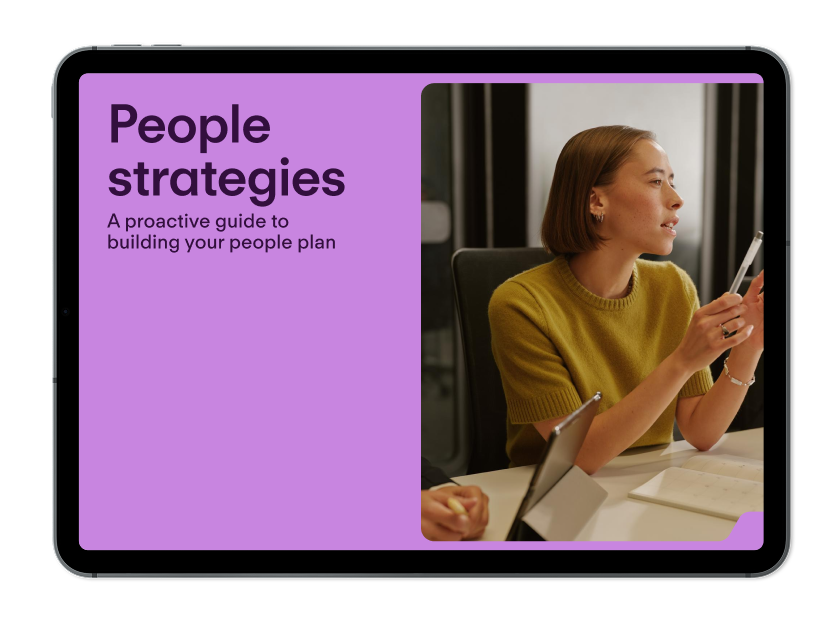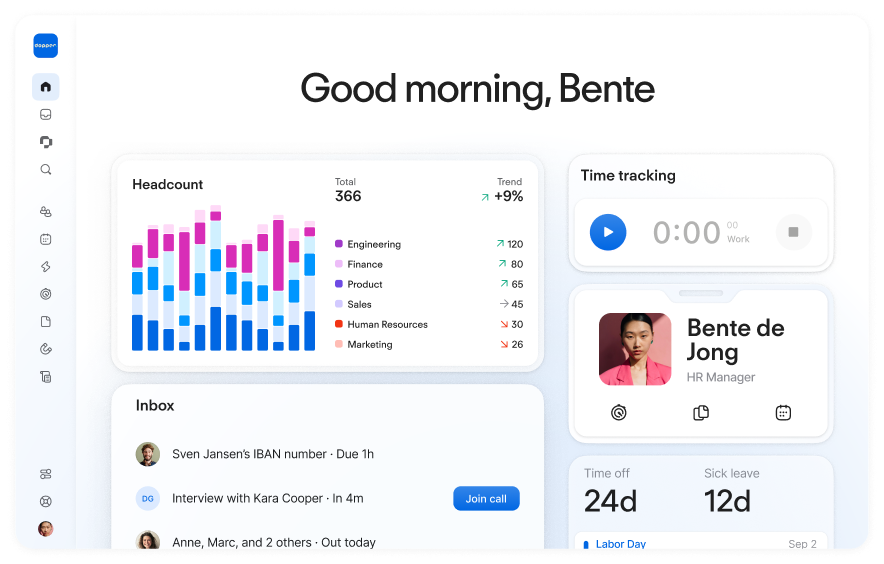23. September 2021
Is Org Design Changing As We Know It?

In my own work, org design is an incredibly multifaceted topic. On its face, you have the overall structure of a company: Departments, career paths, titles, responsibilities, locations, entities, and more.
But, if you go just a bit deeper, you've got an entire ecosystem powering that structure. Think of how information flows, how knowledge is shared, and how it’s all done. Right now, here’s my perspective on how org design might be changing as we know it. – Ross Seychell
An all-in-one HR software to help upgrade your people operations: Discover Personio today.What Is The State Of Org Design?
Org design is just as relevant today, if not more, than ever before. That’s because we will always have roles, teams, tribes, departments, and the like, that need to be structured by career paths, led by leads, and all that comes with it.
The key difference, in our current way of working, is how companies will choose to be set up (whether office-first, hybrid, fully-remote, remote-only roles of teams) and how organisational structure is lived in your organisation which is just as, if not even more critical, as the design itself.
It’s likely that we are seeing a new era of fluidity in org design. So, while there is little new about org design as a topic, companies are now being forced to review, analyse, and revise how they do it. For me, that’s the exciting part.
A New Era Of Org Design: Key Considerations
As I see it, and as we have chosen to tackle it at Personio, this boils down to three key considerations, thought of sequentially, that will help inform the future of org design in an era of distributed work:
Roles & Career Paths
Accessing & Retaining Top Talent
Scaling Cultural Ecosystems
In seeing them as a sequence, it’s important to note that you need clear roles and career paths as a foundation, using them to assess and grow talent, which then evolves your overall cultural ecosystem. They all happen together and in that order!
Let’s break each down, shall we?
1. Roles & Career Paths
There are two factors at play in this first consideration: First, thinking about how roles are designed, and then thinking about how they are set up for success. Let’s tackle each…
Role Design
A distributed workforce may necessitate distributed or remote-only roles. And, while it’s tough to define a hard-and-fast rule, your organisation should agree on a framework to guide role design.
In our own case, at Personio working remotely is available to all for around 50% of the time (more or less). This enables us to keep our people connected to one another and being able to have the best of both worlds — collaborating in person or concentrated focus time when it makes sense.
But, we also have 100% remote roles. Our guidance for this is, for the time being, of no more than ~10% of our org to be fully remote.
What we’ll do is review that over time and analyse the impact on remote-only roles through data involving:
Productivity
Health
Engagement
Retention
For example, we could track remote-only employees as part of an engagement index, track their performance during their respective review cycles, or keep a close eye on turnover or early turnover rates.
Enable Data-Led Decisions

Collect and organise important HR insights such as absences, attrition, and more. Generate detailed reports in seconds so you can strategise with confidence.
Unlock detailed HR analyticsThis will help us spot trends over time and project into the future. Now, for these particular roles, we have defined them as roles where they can spend 100% of the time away from the rest of the team, or as part of a fully remote team.
Finally, unless that team is fully remote by design, for now, team leads will be office-based (as most of their team members will be, too), with the same components of PersonioFlex at play.
Career Paths
If you’re designing roles to be remote or to have elements of remote work baked into them, how do you optimise your career paths to be successful for employees?
Part of this is in the form of role design and helping people succeed, but also understanding that there may be new roles coming up or evolutions to existing roles like IT, office management (becoming workplace management, for instance), internal communications, events, etc.
What you’ll want to do is review the existing roles within your organisations, the ones where you see or want to see evolution at play and start a plan to make that happen.
2. Accessing & Retaining Top Talent
As one might guess, more distributed workforces, or simply the possibility of fully remote or partially remote teams, opens up talent pools wider than some organisations would have ever thought possible.But, there’s a lot to keep in mind. The first is not to fall into the temptation trap of hiring anyone from anywhere, because you may lose sight of effectively scaling your business.
Take our approach, for instance: First, we strategically identify target roles where it would benefit us to have wider potential access to someone remote (who could make a great impact in their role).Or, we have hired remote-only roles in countries where we already have offices. This removes problems of unnecessary overhead that don’t scale with business (setting up entities, etc.)
It also helps here to think in terms of role expectations. For remote-only roles, how often will they travel and visit an office location? Or, spend time, in-person, collaborating? This can help keep your bar high.
In the end, you have to assess your talent supply and demands to fuel your business plan. Paying particular attention to ensure you don’t drop your hiring bar or increase internal complexity.While it might seem attractive to access the largest talent pool possible, it is more your responsibility to shrink it to suit your business.
An additional measure of quality control here is to think about how you assess candidates. Does your organisation have thought-out and expressed values? These, like Personio’s own of #Ownership or #TeamSpirit can help ensure your ability to gain and retain top talent remains high.
Dive Even Deeper Through Our People Strategy Guide

Gain insights directly from Personio's Chief People Officer on how to build a better people strategy roadmap today. Grab your copy, for free, right now.
Download For Free3. Scaling Cultural Ecosystems
A more distributed workforce is not the end of the office as we know it. Instead, it becomes more about scaling those ‘cultural ecosystems’ for collaboration (knowledge flow, relationships, etc.) and for completing the best work possible.Here’s a quick word from Personio’s Head of Workplace, Ciaran Chaney, on the workplace’s role in org design:
"The pandemic has taught us a lot of lessons on how we connect as individuals, both in our personal and professional lives.
In particular, it showed how we can better utilise our surrounding environments and technologies to enhance experiences. – Ciaran Chaney, Head of Workplace, Personio
If we take these lessons learned and transfer them to how we design workplaces, we can ensure that by intentionally designing our offices we create spaces that will foster collaboration, allow for focused work, and promote a sense of connection, purpose, and belonging to Personio’s mission and values.” – Ciaran Chaney
For all those I talk to, both within Personio and in the industry, is that for many it’s about having a choice (and not simply either/or). There is a small group of workers who value 100% remote, typically due to personal circumstances, but the majority want the choice and we are responsible for giving it to them.
Within Personio, though, we have specific People Partners, tied to departments and their leaders, who help navigate scaling all of these cultural practices. They are further empowered by the People Team who come to the table with data and trends, as well.
But, how do you build a culture to scale when it’s distributed? Consider the following:
Start by reviewing your existing info, communications, and knowledge sharing to make sure that it suits your new work mode.
Then, think about how events and other meet-ups work when not everyone is in person. What are those non-negotiable activities where you need to bring people together?
In terms of development, think about how to ensure fairness and (importantly) consistency with performance talks, promotions, and compensation decisions.
That’s the basis of scaling culture and knowledge transfers and communication. But, how do you take that one step further? How do you scale employee relations in a distributed workforce?
Here are some best practices worth sharing:
Ensure that the design of remote-only roles can work truly independently from others.
Give leads specific training on how to lead and support distributed teams.
Provide support to leads that allow them to handle leading teams who don’t work together.
Developed agreed-upon guidelines for knowledge and communications flow.
Use people data and reports to see how roles evolve over time and take proactive steps.
As I mentioned at the top of this article, you should let fluidity reign! Be open to learning and adjusting over time, as there is a lot we don’t know yet and a lot of insight we are sure to gain.
Org Design In A New Light
Right now, organisations should view this point in time as a catalyst for change. With new modes of working, you have the opportunity and flexibility to iterate and change to make your design suit your people, your culture, and your productivity.
The main thing to remember is that org design isn’t simply limited to structures, jobs, and levels — in a distributed and hybrid working environment, other factors become even more key: exchanging information and knowledge flows, sharing best practices, strong communications, and culture.
It’s also why HR software to automate your core tasks has never been more essential — you need to make the foundational elements of HR work seamlessly, so you can not only focus on org design, but on making it a consistent, developing success.

About Ross Seychell
As a business leader with 20 years of HR experience, I have a strong passion for how a company’s most important asset – their people and culture – enables them to unlock and achieve their mission. After building out workplace strategies at high-growth companies such as Wise and King, I joined Personio as Chief People Officer to help us become the leading HR platform and tech employer in Europe.

